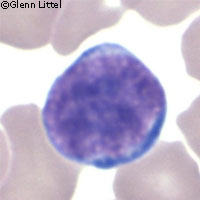Scientists identify new leukaemia gene
European researchers have identified a gene which contributes to an aggressive form of leukaemia that primarily affects very young children. The research, which involved scientists from Belgium, the Netherlands and Spain, is published online by the journal Nature Genetics. White blood cells have an important role to play in our bodies, as they are responsible for fighting off intruders such as viruses and bacteria. However, in people with leukaemia, the cells in the bone marrow which should turn into white blood cells multiply out of control and do not develop properly. The resulting blood cells do not work as they should, putting the patient at risk of infections. This latest piece of research focused on T-cell acute lymphoblastic leukaemia (T-ALL), in which blood cells called immature T-cells build up very rapidly. It is the most common form of cancer in young children, and strikes children between the ages of two and three in particular. With the latest treatments, over half of all children affected are cured, but the hunt is still on to find drugs to help those who currently do not respond well to chemotherapy. It is known that T-ALL is due to simultaneous defects in a number of genes, and scientists are working hard to identify both the individual genes involved and the combinations of genes that trigger the disease. Now scientists have identified a gene called MYB as a factor in the development of the disease. The MYB gene is involved in the control of the proliferation, survival and differentiation of the cells that will go on to become blood cells. In 10% of T-ALL patients studied, the MYB gene was found to be duplicated. MYB has previously been linked to other forms of cancer. The researchers suppressed the MYB gene in T-ALL cell lines and found that this produced a limited, but therapeutically significant effect on the cancer cells. However, they had a much greater effect when they combined suppression of MYB with suppression of the NOTCH1 gene, which is involved in nearly 70% of all T-ALL cases. NOTCH1 inhibitors are already being tested in humans, but these drugs are extremely toxic and not all patients are able to tolerate them. The researchers hope that their new discovery will lead to the development of a new, combined therapy targeting MYB and NOTCH1, in which the concentration of NOTCH1 inhibitors is reduced.
Countries
Belgium, Spain, Netherlands



